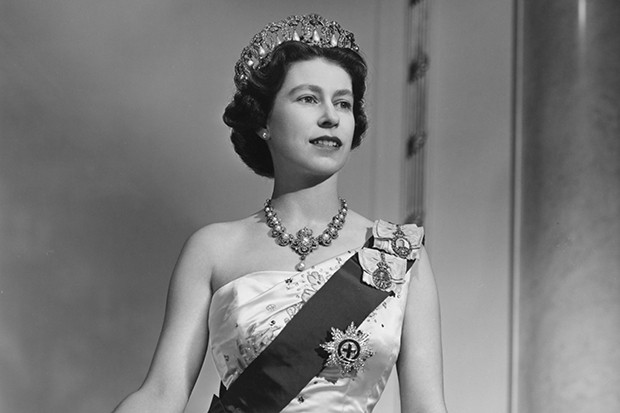Queen Elizabeth II, born April 21, 1926, as Elizabeth Alexandra Mary, is the oldest child of King George VI and the longest-reigning monarch in the history of Britain. Ironically, it was highly unlikely that she would ever ascend to the throne when she was born.
Early Life
When Elizabeth was born, she did not have a direct line to becoming the next monarch, as her uncle, Edward VIII, was in line to become king. Not long after Edward became king, he abdicated the throne, changed the family line’s hierarchy, and placed Elizabeth’s father Albert as king in 1936.
Elizabeth and her sister, Margaret, were educated by their mother, a governess, and tutors. During the blitz of World War II, the girls were sent away from London to live at either Windsor Castle, Royal Lodge, or Balmoral Castle in Scotland.
In 1947, Elizabeth was betrothed to her distant cousin Philip Mountbatten, a lieutenant in the Royal Navy. They were married the same year, and in 1948 she gave birth to their first son, Charles.
Queen Elizabeth
The health of Elizabeth’s father began to quickly deteriorate in 1951, and he died on February 6, 1952, while Elizabeth and Philip were on their way to Australia and New Zealand as part of a tour. Upon hearing of her father’s passing, the newly made queen returned to England and entered a period of mourning. She was officially coronated on June 2nd, 1953.
In the fall of 1953, Elizabeth and Philip began a large tour of the Commonwealth. The historic tour marked the first time a British monarch visited New Zealand and Australia. Travel to places not often seen by the British monarchy became a theme for Elizabeth throughout her reign. In addition to visiting frequently traveled locations such as European countries and the United States, she also was the first reigning monarch to visit South America and the Persian Gulf countries. In addition, Elizabeth made the first royal tour of the Indian subcontinent in fifty years, and Ireland was the first visit by a monarch in one hundred years.
Royal Family in the Modern Era
Elizabeth’s long reign has been through its share of struggles through changing times. The scope of the British empire decreased, and the role of the monarchy itself was put under great scrutiny. Throughout her reign, Elizabeth made strides to alter the perspective of the royal family and make them appear less stuffy and more personable. She even allowed the royal family to be televised in 1970 in a less formal, domestic setting.
The 1990s, however, brought the royal family into the tabloids quite often with news of several divorces and eventually the death of her daughter-in-law, Princess Diana. The royal family was highly criticized for how that particular tragedy was addressed.
In 2017, her husband, Prince Philip, retired from being part of the public life in the royal family, and he died in April of 2021. Throughout her time on the throne, Elizabeth II has carefully balanced the traditions of royalty with the more modern views.

